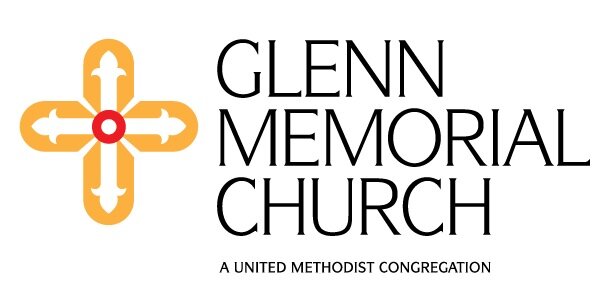Last summer, a group of about 25 members of Glenn Memorial UMC took a trip to Montgomery, Alabama to visit the National Memorial for Peace and Justice and The Legacy Museum. The trip was organized as part of Glenn’s ongoing conversations around racial justice, white privilege, and the role we as individual followers of Christ and we as members of Glenn Memorial should take to fight for equal justice for all.
I went into the trip hoping to listen, learn, and discuss ways in which we can fix the systemic racism and inequality in our country. I left Montgomery sick to my stomach, with more questions than answers. How could a nation founded on equal rights for all get to such a place over the last 240+ years? How could we as a Church sit on the sidelines for so long as our brothers and sisters in Christ suffer?
The Memorial and Museum are part of a non-profit called the Equal Justice Initiative (EJI). EJI was founded in 1989 by Alabama based Attorney and social justice activist Bryan Stevenson. What started as an organization to provide death row inmates legal representation in Alabama (due to the elimination of federal funding for such support) has blossomed into a movement to tell the story of our Nation’s ugly past and the very slow march toward equal justice for all.
We started our journey at The Legacy Museum. Housed in a former slave warehouse and a block from one of the largest slave auctions in the United States, the cramped rectangular building lays out a very clear, linear, deliberate march from the massive economic engine created by chattel slavery to present day mass incarceration. Slavery, to the Civil War, to race-based domestic terrorism (i.e. lynching), to separate but equal and Jim Crow, to mass incarceration. It’s all laid out in clear, factual detail; a nation founded on race-based power that has yet to completely heal itself. I left wondering how anyone could argue that white privilege doesn’t exist in our country then and now. I also left wondering how millions of brothers and sisters of color could keep hope in such an environment.
Our group then walked the mile up the hill to The National Memorial for Peace and Justice, a.k.a. the Lynching Memorial, passing through a rundown section of Montgomery that was likely once a bustling neighborhood before the suburban flight. This breathtaking and solemn outdoor memorial pays homage to the more than 4,400 lynchings of black people that occurred in the United States between 1877 and 1950. You enter the museum at the top of a short-crested hill, staring at rusted columns that list the names and dates of known lynchings organized by state and county. As you continue to walk in awe, the ground slowly slopes to reveal the rusted columns are actually hanging from the structure above.
I entered the Georgia section of columns. There it was, laid bare, 592 KNOWN lynchings across almost every country in our state. DeKalb County. Fulton County. Columbia County where my wife grew up. We walked further, slowly down the slope, I entered North Carolina where I lived for a few years, then Virginia, where I spent most of my childhood. Haunting. Gut-wrenching. There are no words to describe the experience. Finally, at the end, there is a quote etched in stone above a calming waterfall:
For the hanged and beaten.
For the shot, drowned, and burned.
For the tortured, tormented, and terrorized.
For those abandoned by the rule of law.
We will remember.
With hope because hopelessness is the enemy of justice.
With courage because peace requires bravery.
With persistence because justice is a constant struggle.
With faith because we shall overcome.
And then this poem from Toni Morrison.
Back at the top of the hill lay duplicate columns for each county. In a brilliant strategy of reckoning and reconciliation, the EJI is requesting each County to personally claim their column, cover the cost of transport back to their location, and display the historical marker it in a public place. DeKalb County is set to unveil its column this September. The duplicate columns left in Montgomery will provide a clear marker of progress.
Our group slowly congregated near the exit, all quiet, in shock, in reflection. We closed our eyes, joined hands in a circle, and recited this invocation:
Litany after visiting Memorial to Peace and Justice
Today has been an opportunity for learning truths and reflecting on them.
Thy kingdom come.
We have seen the names of these children of God and we have read their stories. We lament the silence that has surrounded them for far too long.
Thy kingdom come.
As people of faith for whom the greatest commandment is to love our neighbor, we commit ourselves to shining the light of truth on our country’s history, confessing the role that that history played in creating the systems of oppression that still exist today, and working towards justice and reconciliation.
Thy kingdom come on earth as it is in heaven. Amen.
As we loaded into the bus and drove home, the sunset over the southeastern Alabama landscape. For miles, it was an environment of deep reflection. Then slowly but surely, we all started to open up. What should we do next? The centuries of systemic oppression seemed so hard to solve. Our country felt like two completely different ones with different rules depending on the color of your skin.
But perhaps the solution is simple.
Listen. Understand. Pray. Show Up. Stand Up. Speak Out. Always with Christ’s love.
With God’s Grace, and Peace
Aaron Hurst
**To sign-up for this year’s day trip to Montgomery, AL to experience The National Memorial for Peace and Justice, go to tinyurl.com/montgomerytrip to register and pay. Tickets are $11/adult and $7.70/seniors and students. If you have any questions, please contact Carol Allums.

